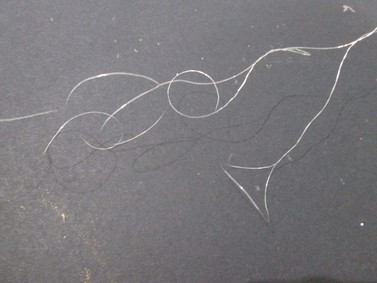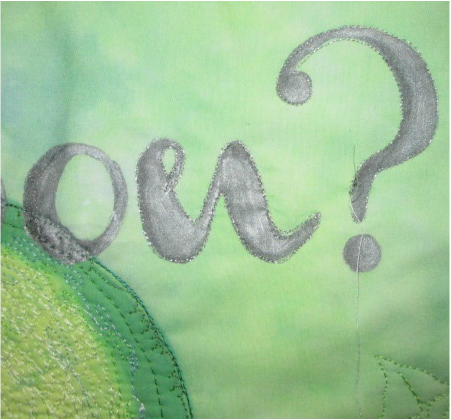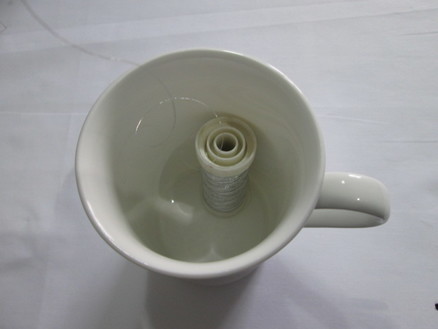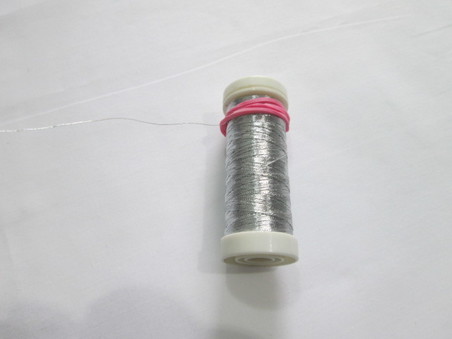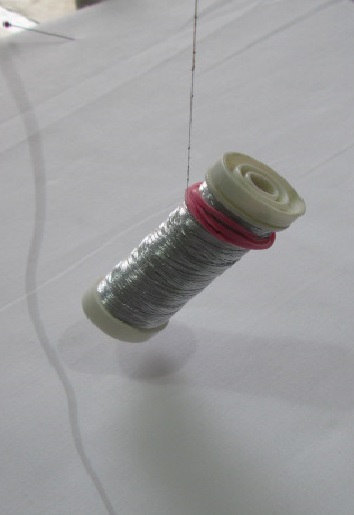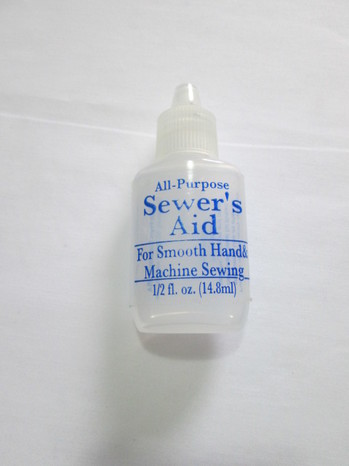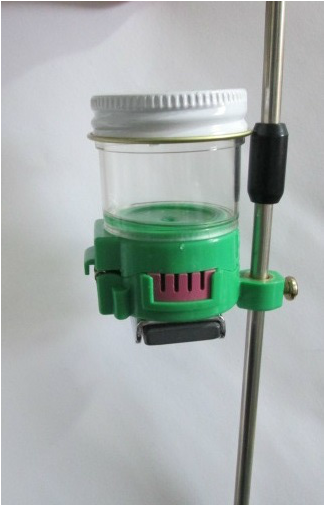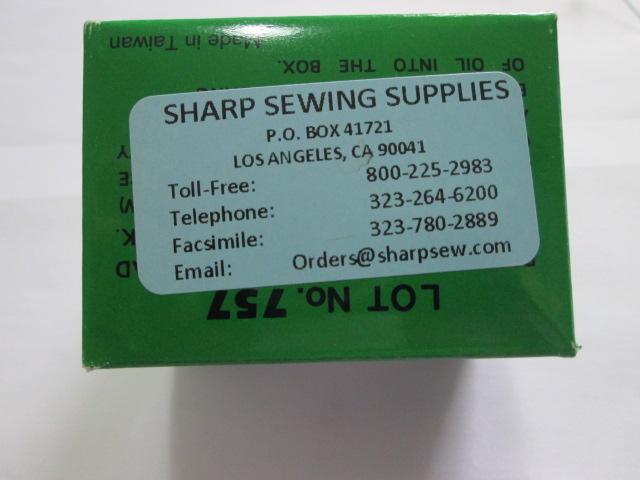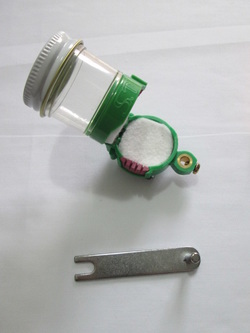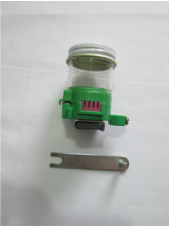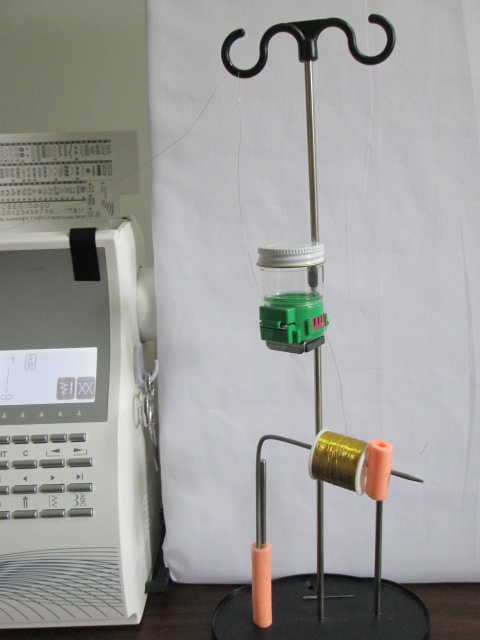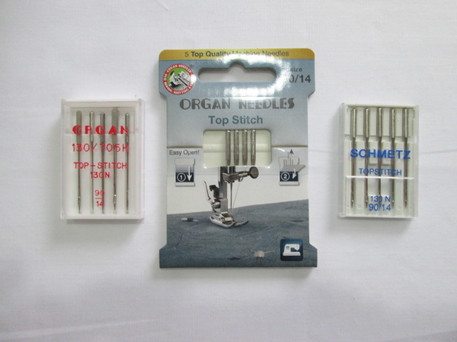|
This week I have moved along quite a long way with the 'Am I Beautiful?' quilts currently on my design wall. I have got to the stage where I need to do quite a lot of free motion quilting using metallic thread. Yikes! Free motion quilting and metallic thread in the same sentence. I must be nuts.
If you have ever stitched with metallic thread then I'm sure you have been there - thread going haywire, making birds nests on the underside of the fabric, getting jammed in the feed dogs, snapping every 5 seconds, coiling up like a spring and shredding in the needle. Not all metallic thread is difficult, but if you know what I'm talking about then you will also probably have a few tricks up your sleeve to solve the problem! There are lots of blog posts around where people share their tips and secrets. Here are two I especially like. Click on the 'see Kate sew' or 'Academy of Quilting' boxes below to go directly to these blogs and see the tips these kind people have shared.
With all that good advice, however, my thread still played up. It was a particularly wiry, extra-shiny silver and no matter which way up I put the spool, it just coiled up as you can see in the picture below. The thing is I really wanted to use it, despite having several other silver threads. I should have known better, but I wanted THAT thread - so I persevered. I wont repeat what these two great blog posts have shared - that would be pointless, but I thought I would share a pass along a few further tips for that I discovered as I to tried to cope with this coiling monster! 1. Always, always take the time to stitch some samples, until you get the best stitch you can manage. It may not be perfect and you may feel like you are wanting both time and thread - but I promise, it is better to get it sorted out early than risk ruining your work.... and nobody I know likes unpicking! 2. If the thread is cross wound, put it into a cup and put the cup on the floor and then let the thread come up and over a thread stand before you thread the machine. Giving that thread lots of room to wiggle and untangle before it gets into your machine is a good idea. My thread wanted to coil up like a spring whatever I did with it, but this did at least let me see (out of the corner of my eye) when the thread was getting too twisted to sew nicely any more. When it was just too twisted up I had no option but to uncurl it all before it snapped. However, rather than cut the thread and have to start again I perfected a kind of spinning top method to uncurl it. I stopped stitching with the needle down, then put an elastic band around the spool of thread to stop any more thread from coming off. Then I stood up and grasped the thread at the point where it went over the thread stand and let the long thread with the spool on the end dangle downwards. Lifting my arm so the spool was just above the floor allowed the spool to rapidly spin around, getting all those coils out. Once it stopped spinning I removed the elastic band and put the spool back into the cup and carried on stitching. It was a nuisance - but it did stop the thread from snapping and allowed me to carry on stitching. 3. The next thing I did was to lubricate the thread with (Collins) Sewer's Aid silicone lubricant. I've had this bottle of magic for years - never really knowing what to do with it. Since learning more about lubricating thread I must say I think it makes a big difference with these troublesome threads. I have just looked it up online - most of the quilting shops stock it, and it is also available on Amazon. The price varies a lot - between £5 and £8 - so shop around! The main issue that I have with it is how to get it onto the thread without having too little or too much. See below for the solution! Earlier in the year I read read about a little gadget called a lube box that is used by industrial sewing machine operators. Essentially it is a little jar with a hole in the bottom. Under this are two pieces of thick felt (you can't see them here), through which you pass the thread. It is a dinky little thing. It has a magnet on the base to allow you to attach it to your metal machine, or a little screw clamp if your machine is not magnetic. I've clamped mine to my thread stand and it works brilliantly.
I searched the internet and found them for sale in the USA. I'm sure they must be available elsewhere - but I ordered mine from Sharp Sewing Supplies via eBay.com for $12 (US) +post.
Here are a few more pictures so you can see what it is like
All you do it put some Sewer's Aid into the little jar and allow it to penetrate into the felt pads. When you thread your machine you lift the little jar section (above left) and place the thread between those two white felt pads. Then you close the jar down, trapping the thread and allowing it to pass through to the other side. The brownish part you can see above right has little grooves to guide the thread. You could have as many as 5 threads passing through the lube box - each one getting the perfect amount of silicone lubricant on it. Think of it as hair conditioner for thread! 4. If your thread is straight wound (also known as stacked) then a different approach will probably work better. Rather than standing the thread vertically, it is usually better to have the spool positioned horizontally. If your machine does not have this set up, then you will need to get inventive. My machine does have a horizontal spool pin, but to give the thread room to uncurl I used my thread stand again. The trouble is, it only has vertical spool pins. However, with a bit of lateral thinking it now has a horizontal option, courtesy of a bent double ended knitting needle and a small piece of foam tube (that used to be a hair roller). Take a look at the picture below to see what I did. 5. Finally, needles. My preferred needle choice is the Top Stitch needle. I love these for everything, but especially for tricky threads. Personally I don't use metallic needles as I find these better. In my view, try what you have and see what works - don't slavishly follow the rules or what it says on a label - try things out and use what works for you. I must say that not all metallic thread misbehaves as badly as this one and I hope you never end up sewing with such troublesome thread, but if you do, and you decide not to throw it out of the nearest window, give these ideas a try. It might just save you some grey hairs. Thanks for reading.
|
|





